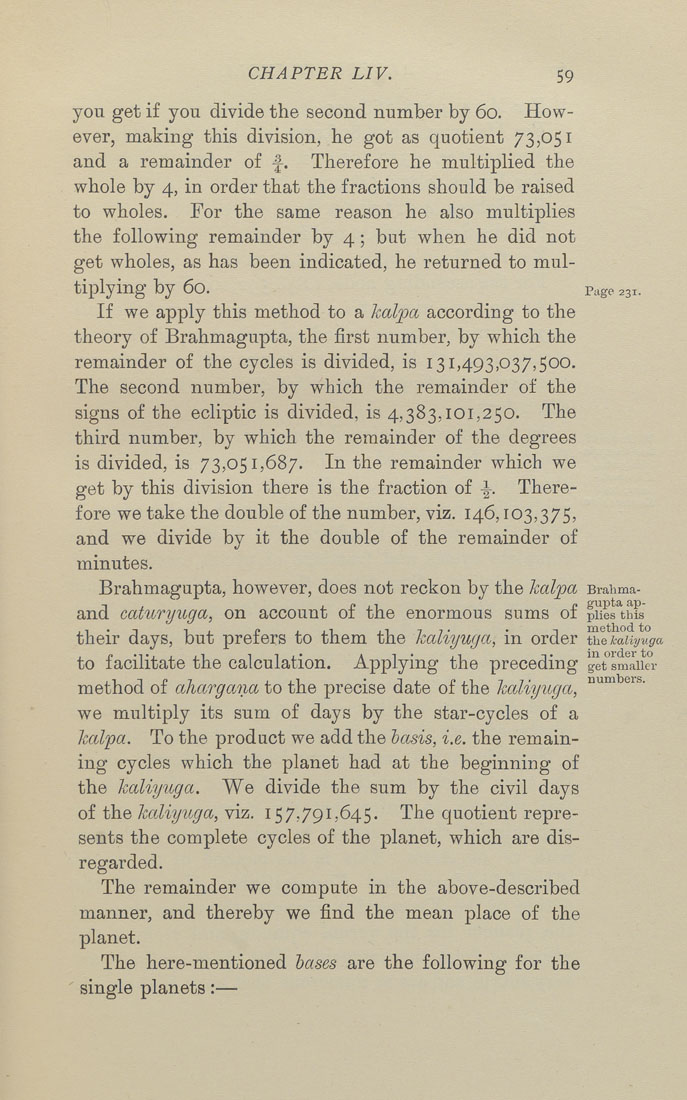CHAPTER LIV. 59
you get if you divide the second number by 60. How¬
ever, making this division, he got as quotient 73,051
and a remainder of f. Therefore he multiplied the
whole by 4, in order that the fractions should be raised
to wholes. For the same reason he also multiplies
the following remainder by 4; but when he did not
get wholes, as has been indicated, he returned to mul¬
tiplying by 60. Page 231.
If we apply this method to a kalpa according to the
theory of Brahmagupta, the first number, by which the
remainder of the cycles is divided, is 131,493,037,500.
The second number, by which the remainder of the
signs of the ecliptic is divided, is 4,383,101,250. The
third number, by which the remainder of the degrees
is divided, is 73,051,687. In the remainder which we
get by this division there is the fraction of ^. There¬
fore we take the double of the number, viz. 146,103,375,
and we divide by it the double of the remainder of
minutes.
Brahmagupta, however, does not reckon by the kalpa Erahma-
and caturyuga, on account of the enormous sums of piies this
their days, but prefers to them the kaliyugct, in order tiiekaiiyuga
to facilitate the calculation. Applying the preceding g'^rsnTIue'r
method of aharga,na to the precise date of the kaliyugct,
we multiply its sum of days by the star-cycles of a
kalpa. To the product we add the bctsis, i.e. the remain¬
ing cycles which the planet had at the beginning of
the kaliyuga. We divide the sum by the civil days
of the kctliyuga, viz. 157,791,645. The quotient repre¬
sents the complete cycles of the planet, which are dis¬
regarded.
The remainder we compute in the above-described
manner, and thereby we find the mean place of the
planet.
The here-mentioned bctses are the following for the
single planets:—
|








